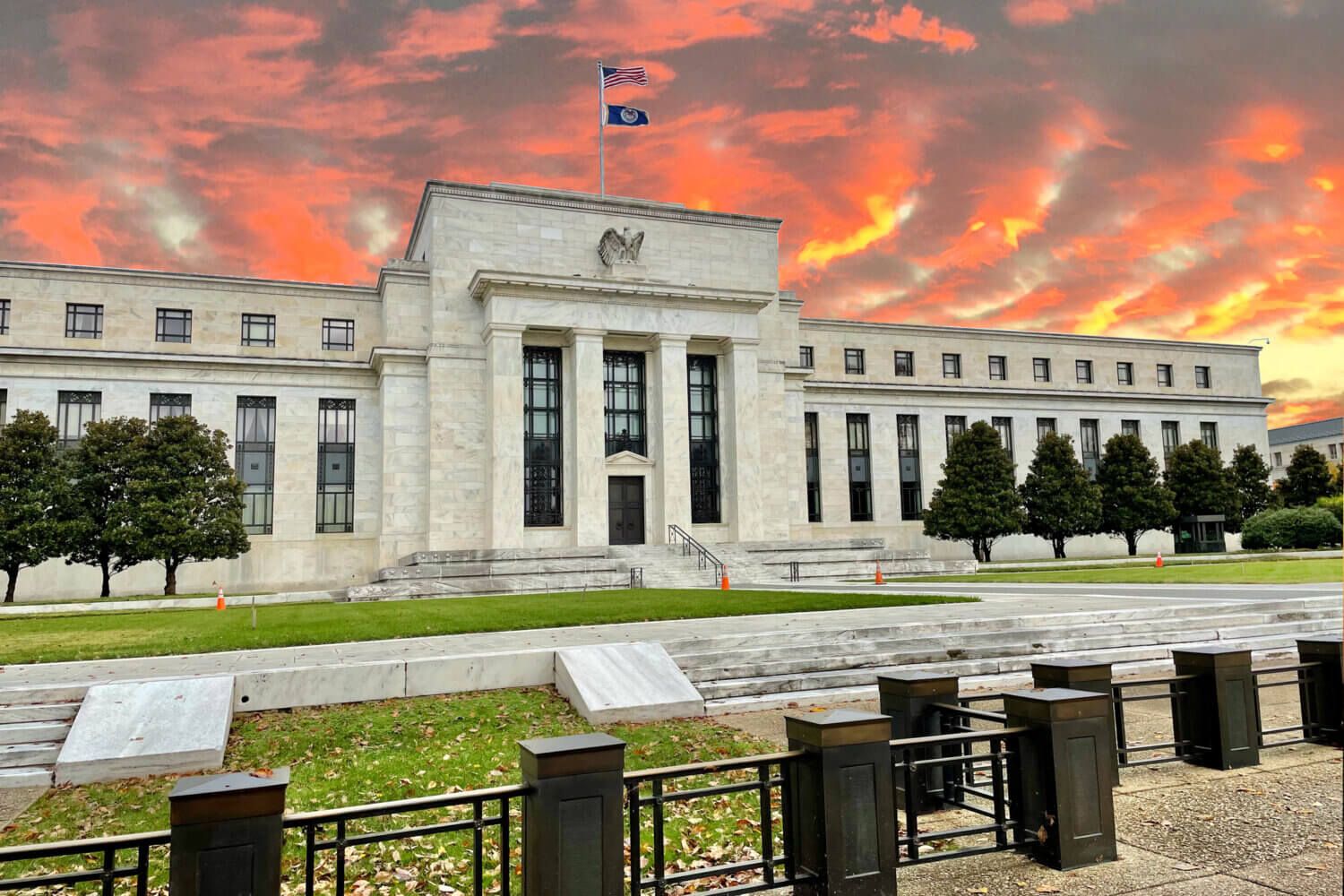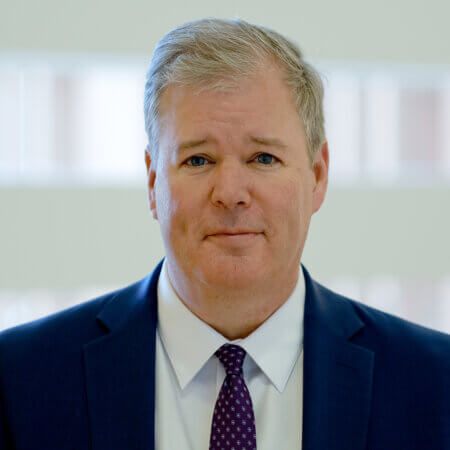
Thornburg client portfolio managers discuss the nuances of the fixed income market and what should be top of mind for investors.
Thornburg Investment Insights: A Deep Dive Into Fixed Income Markets
Josh Rubin: This is the CPM round table, where Thornburg client portfolio managers will discuss topics that are top of mind for investors. My name is Josh Rubin and I’m joined by Phil Gronniger and Ben Keating. And as client portfolio managers, we are engaged daily with both the investment team and clients, which gives us a unique insight into what’s top of mind. In our last discussion, we covered the many dimensions of the equity market. Today, particularly given some of the dislocations in macro trends, let’s talk about state of the fixed income market. It’s a broad topic, but all three of us have spent plenty of time in fixed income, so we can dive in from any direction.
Phil Gronniger: Sure. I’ll jump in briefly to start with the fixed in terms of market reaction to some of what’s happened so far this year. But, when we look at, if you will, sovereigns or in this case, we’ll say U.S. treasuries, we’ve seen U.S. Treasury rates declining. For the most part, though, the 30 year is a little bit higher so far this year. But if we look a little further back, let’s go back to September last year. Rates are up across the curve. So steeper curve. So, if we look on the front-end twos are up about 17 basis points 30 zero more than 70 basis points in yield. So, if you will that’s the market saying that there is the potential for inflation. And the Fed’s not going to cut as much from a Treasury view. And we didn’t get a big flight to quality more recently in treasuries either.
We take, if you will, looking at risk assets within fixed income, you look at credit spreads, they were tightening throughout most of last year. We finished the year, if you look at corporates in the top decile for investment grade and high yield corporates…
Josh Rubin: Top decile meaning tightest spread.
Phil Gronniger: Tightest spreads, yes, indeed. So high yield was within about 70 basis points of its tightest ever, which is back in May in 2007. They widened out in the spring. High yield got back to its post-GFC global financial crisis average. That allowed for some opportunity to take advantage of some of that dislocation, but they’ve rapidly tightened back in, again. So, a lot of the geopolitical risks that we’ve seen, that might lead one to think that there would be a big flight to safety and a big selloff in risk assets, be it fixed income or equity, hasn’t really taken place. Markets have behaved pretty well, a little bit of volatility earlier in the year. But it’s been a good overall investment environment with an occasion for some repositioning.
Ben Keating: Yeah. I mean, I just have an, a paradox that that and I totally agree. But that’s in the backdrop of a ballooning total global debt.
Phil Gronniger: Yeah.
Ben Keating: I think the global debt now by wider measures of $350 trillion. So, you’re always looking not only at what’s liquidity, a lot of moving parts of fixed income. But again, I’m amazed how well-behaved credit markets, corporate U.S and overseas for that matter. Any one of these events we talked about certainly tariffs. So any one of those would have cost you a massive, massive flight of quality and spread widening. It just hasn’t happened. I think that’s a fair argument that there’s not systemic risk in the debt overall, which is an amazing paradox to have that much debt and not have it be a house of cards, frankly, because there’s kind of a peace dividend from the in the debt markets post ‘08. Most individuals, most munis for that matter, most corporates are not as levered empirically as they were pre-’08.
You could argue there’s other ways to get capital. I guess private credit is another access. But no one really is talking about a real problem with liquidity. And that’s a remarkable turnabout. It can change when you watch this, when what we’re talking about today, the health and liquidity could change in the fall or next year. But again, I think you just want to take heed. It’s actually been a remarkably well-behaved in some spots. And then as it relates to the asset class overall in fixed income, I think the tables perhaps being set for fed getting back in the cuts. It’s not necessarily in our camp at Thornburg, but you could say that we’re still way elevated in rates versus the rest of the developed market.
And that any type of weakness, maybe we had them come back in. And that’s always a good tailwind to have for investing. I think it moves cash from the sidelines. So yeah, I mean, of all the trends, Josh, fixed income has been the most interesting. I know people are fed up, perhaps the rates haven’t collapsed. They want that the lost, returns they had for three years ago back.
But I think it’s actually not a bad thing if the shape of the curve somehow becomes steeper. That’s the way it used to be. And if the Fed just gives you incremental cuts over the cycle, they don’t collapse. They don’t need to rush in to save the markets is a pretty good backdrop for investors.
Josh Rubin: It’s always easier for the conversation to kind of lead towards stocks or macro than fixed income. But there’s a lot of different types of fixed income. And you know, we talk about it as a single asset class, but we’ve got everything from treasuries or a Treasury yield curve to asset backed securities and structured and, you know, corporate investment grade and high yield and so on. Phil, do you see any really notable types of, dislocations and relative value in the fixed income market by asset class? You know, are European sovereigns are equally attractive, less attractive compared to where US sovereign sit? You know, for however that’s measured. Same thing, you know, are CLOs just as attractive as plain vanilla corporate investment grade or over the last several months or, you know, several years of rising interest rates, Liberation Day. Are there some areas where maybe a different type of risk is being priced in, unlike equities, which have been more steady as she goes?
Phil Gronniger: I like bringing it back to fixed income. (You’re) Talking to, I think, a couple of bond geeks here, I started on the fixed side. My first mentor, still good friends with them. And, you don’t get to hear a lot about fixed income when you turn on the television or listen to a lot of podcasts. You’re too busy geeking out over bond nerds. And we like math and economics. Equities are exciting. Bonds are math and economics, so they can be boring. But as you said, there are a lot of opportunities and different ways to invest money in the fixed income side of things, whether it’s the formerly Triple-A now double a US Treasuries or our sovereign debt, or credit. Credit is non-U.S. governments if you will, or non-other governments. That’s where you get some additional yield spread over the Treasury curve. And for US corporates or securitized and securitized breaks down to do well mortgages, agency mortgages, non-agency mortgages, commercial mortgage-backed securities, asset backed securities, things like CLOs, collateralized loan and collateralized loan obligations. That’s where you can get some additional yield or income that spread the amount of yield you get over treasuries. And what we saw was last year, the corporate spread, the additional yield over treasuries was tightening all year. So, you’re getting nice price appreciation, but your compensation for taking risks was going down. That pushed some people further and further down in quality, taking more and more risks to try to maintain a higher yield or to get more spread or carry if you will carry being the additional year.
The income over the Treasury term. But securitized wasn’t tightening as much. So, securitize again MBS, CMBS, ABS, a lot of acronyms and fixed income side of things. But those were tightening but not nearly as much. They didn’t get as stretched in terms of the valuation. And if you think about spread additional yield over treasuries, it can only go so tight that your risk if you utter compensation for taking risk in something that’s non-government. So, as things get tighter and tighter your opportunity to see that continue declines more and more. So, we saw some shifts to more opportunity in securitized. So commercial mortgage-backed securities, for instance, where there’s a lot of fear about increasing vacancies in office space. And there’s a view that all CMBS or office and all office is bad. And that’s not really true. Some great potential investments in the office space, high quality office. There’s a lot of diversification in the CMBS space as well. I think industrials warehouse, think of a wide variety of other in the CMBS like multi-family housing and in the asset back space very similarly. And asset backs, it’s much more consumer oriented. So, think like credit cards autos. But there are other things like cell towers you can even do as a wide variety. You could do shipping these containers aircraft lease. But within that securitized space, again valuations were a little more attractive. Or if you didn’t get as rich or tight on the spreads.
Josh Rubin: And I know flows in fixed income were more opaque than in equities. But for the asset classes that did not tighten as much, do you think that’s a flow. You know, is it that retail investors were just buying more plain vanilla corporate bond funds. So money was, you know, flooding into the highest quality or sovereign allocations or we just don’t know.
Ben Keating: Yeah, it’s so hard to say. It’s just a recall. You know, the bond market is over the counter, which is a fancy way of saying you got to pick up the telephone negotiations, not some exchange.
So there’s always price discovery, there’s always liquidity, perhaps. And it’s just a testament that is does there deserve to be a heavy term, pretty heavy extra spread for corporations if somehow the balance sheets are pretty, pretty good even in high yield companies have to say there’s not as much talk about massive default risk and say there’s more downgrade risk.
The areas that Phil mentioned that we’re, at Thornburg, we’re actually looking at, we see terrific opportunities in CMBS and asset backs. But yet we fully acknowledge that the fundamentals of those two sectors are incredibly weak. So, you know who’s going to work in an office building that’s been talked about for five plus years? And then you look at ABS, there’s some higher delinquencies, higher issues perhaps, going on there.
So, it’s kind of a little bit of a, paradox to have interest in those sectors. But we think we can get our arms around those credits. We think there’s good relative value there. But I think it’s a testament where they didn’t see a lot of spread widening despite a lot of events, whether it’s Russia/Ukraine even going back to the early days of Covid, it’s widened and then came right back.
I think there’s just a lot of demand for yield, incremental yield globally, a lot more people who are relative value driven and understand how to ask the right questions. And who knows, we may never see the classic historical spreads. If you just ask, you know, this latest thing early in the day that high yield spreads were 215 only gapped up to 450. Normally, there was a real problem that recessionary spreads are closer to 800 900 basis points. Hard to say we’ll ever get that type of spread, even in a benign recession, but it’s just really curious to see. I think it’s a testament to how well-run these companies are. You’re not seeing terrific spread widening in most companies.
Phil Gronniger: Yeah, and adding on to just what Ben said, the fundamentals for corporate America are really good. And you think about it, think about a corporation for the listener out there, corporates, they’re borrowing money just like an individual investor. Imagine yourself. You’re borrowing money to buy a house or whatever. You pay an interest rate on that. Corporations did the same thing that most consumers did through Covid. They refinanced their debt, they borrowed more money at record low interest rates. That really helped their fundamentals. This is a company deleveraging their balance sheet just like a consumer might pay down their debt. They termed out their maturities of corporations or asset backed securities have different maturities. So, two-year five-year, 10, 30-year debt out there. But they took record of low interest rates on that. And they have to pay that interest on that debt. But many of them took advantage of that and borrowed. They did leverage their balance sheets. So, one of their metrics is it’s called the interest coverage ratio. They all cash. They got a low coupon. They have to pay that coupon. And they’re paying a really low rate.
So, it really helped their fundamentals. We saw a tremendous amount of upgrades and as Ben pointed out defaults aren’t spiking. We see some slowing in the economy. At some point you’ll see those defaults start to rise a little bit. The economy does slow cash flow slow down. And there’s some companies somewhere that borrowed a little too much money. And if their business were to slow to dramatically in might struggled a little bit. But in general, the fundamentals are very healthy on corporate balance sheets.
Josh Rubin: If I think back several years ago and I can’t think of if this was during Covid or maybe in the late teens, I think Coca-Cola’s bonds traded inside of U.S. treasuries. And at that time, there was this argument, hey, you know, the U.S. had been downgraded, and it was a corporate triple A is a higher quality credit than the US government now just because of the health of the balance sheet and particularly for stable triple businesses, a defensive staples company, not, you know, not the highly levered triple A’s of the pre financial crisis. But, you know, do you think that’s, an accepted piece of wisdom now that, you know, high quality corporates could actually be as safe or safer?
I know it’s not reflected fully in treasury spreads, but maybe that’s a reason investment grade spreads are so tight, is there is this group of investors out there saying I trust, you know, a double or triple a fortune 500 company more than I trust the federal government to pay me back.
Ben Keating: Yeah, it’s hard to see that dynamic be a sustainable trend because I think, again, to be sure, we’ve we’re always questioning especially I mean, treasuries are probably a bigger conversation the last few months. What’s the term premium. Should it go higher. Bond vigilantes are definitely pushing yields higher than they otherwise would be. And it’s a fair question. If we keep ballooning the debt, what should be required? Is that debt going to be good. What a good 20 years out. And it’s probably just as much a question on treasuries versus other things.
To your point, Josh, GSE’s, Freddie’s in the Fannie’s. They’re actually trading lower yields and treasuries. They have been for some time, even before Liberation Day. But it’s always a good reminder when you do have a real situation, a prolonged liquidity crisis, we’re still not going to give up to the treasury of the dollar or the safe haven. There’s no real other mantle. No one else deserves that mantle. But the exclusivity, the super exceptionalism of U.S. treasuries is perhaps going to be challenged. We’re starting to see that in the context of other sovereigns; to look at Japanese yields are the highest yields for 40 years. So, there’s not as much interest, perhaps from domestic Japanese investors to look at treasuries. It’s hard to know the full number, but definitely the Japanese, the Chinese were the biggest buyers of new issuance. That’s come down dramatically, but they’re not out entirely right there. Like everyone else, they see the U.S is still a viable option. I just think it’s back to our international equity conversation. You’re probably going to have to compete with some other forces, a new dynamic, and the US is going to perhaps slip a little bit versus our exclusive super exceptionalism we had. And that’s true of the dollar too, right? The dollar really went up higher during Covid were probably waning because of that. And there’s just a little bit of a deflating part of that.
Josh Rubin: The healthy thing for the US economy has been after the financial crisis over levered consumers and over levered corporates transferred that leverage under the federal balance sheet. And the fed was happy to buy that debt. And, and some foreign governments were. But it does seem you know like maybe the debate for the next one to 5 or 10 years will be who’s the incremental buyer if the Fed’s not going to be buying with QE, maybe foreign governments have less of an interest due to trade realignment.
Then, you know, where does the capital come from to keep funding the federal refinancing? Or, you know, all of us have gray hair. So we all used to hear about crowding out. And, you know, nobody talks about crowding out anymore. But it seems like that could happen again.
Ben Keating: But they talk about the monetization of that at some point will that such staggering numbers write $350 trillion global got now 38 plus trillion just in the US federal system. Mind blowing numbers. But always ask yourself, where else are you going to go? Right. So, and not to sound unpatriotic, but if there was a better, more viable, full faith and credit know Thornburg investors, our competitors would go flock there. It’s just not there’s nothing available that would knock the Treasury fully down. But you’re definitely seeing competing forces that weren’t there even six months ago.
Phillip Gronniger: So the acronym, TINA,
Ben Keating: Exactly. Exactly right.
Phillip Gronniger: …applies to excess Treasurys. There is no alternative. Yeah. Is it. That’s a good point in that. You know our ballooning deficit. When the fed does start to cut rates, there used to be and there always has been this view that you know fed cuts rates. The curve comes down. All you’ve heard from the front end where they cut rates out of the 30-year U.S. Treasury. But perhaps we don’t get much movement down in longer rates. This is where our government – we still have the full faith and credit. Still have the safest, if you will, technically investment in the world. U.S. treasuries, although we’re double AA now, not triple AA. We lost the last of our Triple-A status this year, but, fed controls the front end. The back end prop doesn’t come down much. And we get a little drift lower. There’s a knee jerk reaction if perhaps we get a new fed chair next year that leans a little more dovish. But we’re, we’re going to pay the price as a country in terms of our yields on our debt, perhaps not rallying or coming down to as much price appreciation as treasuries. Now, as an investor, though, if you think about it, you’re investing in fixed income today versus, any time post GFC up to 2022 wasn’t a lot of opportunities for income, if you will. And as you think about where yields were in a zero rate environment when the fed was holding rates on the front end at zero, rest of the curve was exceptionally low until the fed raised in 22. The Fed reset things to a more if you will normalize the yield curve normal environment. And as investors, whether they’re looking at sitting in cash or putting it to work in the fixed income markets, it’s a great opportunity versus the last 15 years for fixed income investors today to actually earn something again.
Josh Rubin: Phil and Ben, this has been a great discussion about the fixed income market. I think in our prior conversations, we’ve been talking more high level, and in our next conversation, let’s try to focus on the benefits of active management in a volatile environment like we’re seeing today.
Important Information
The views expressed are subject to change and do not necessarily reflect the views of Thornburg Investment Management, Inc. This document is for informational purposes only and does not constitute a recommendation or investment advice and is not intended to predict the performance of any investment or market. It should not be construed as advice as to the investing in or the buying or selling of securities, or as an activity in furtherance of a trade in securities.
This is not a solicitation or offer for any product or service or an offer or solicitation for the purchase or sale of any financial instrument, product or service sponsored by Thornburg or its affiliates. Nor is it a complete analysis of every material fact concerning any market, industry, or investment. Data has been obtained from sources considered reliable, but Thornburg makes no representations as to the completeness or accuracy of such information and has no obligation to provide updates or changes. Thornburg does not accept any responsibility and cannot be held liable for any person’s use of or reliance on the information and opinions contained herein. The views expressed herein may change at any time after the date of this publication. There is no guarantee that any projection, forecast or opinion in this material will be realized.
Investments carry risks, including possible loss of principal.
More Insights

Finding Opportunity Amid Imbalance: 2026 Market Outlook

Thornburg Income Builder Opportunities Trust Announces Distribution

Ferrari’s Electric Future and the Evolution of Luxury Investing

FOMC Update: Fed Approves Third Consecutive Rate Cut, Projects Slower Pace

Luxury Brands Navigate China Slowdown and Tariff Pressures



